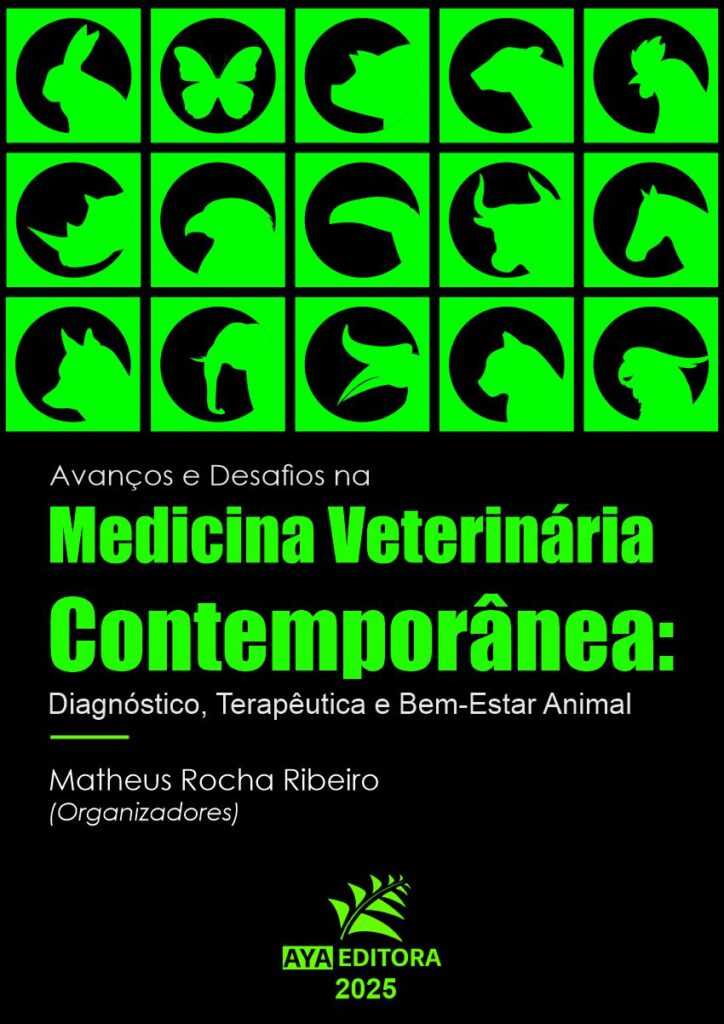
Potencial Terapêutico da Ozonioterapia no Manejo de Ulcerações Corneanas Indolentes Refratárias em Animais de Companhia
Potencial of Ozone Therapy in the Management of Refractory Indolent Corneal Ulcerations in Companion Animals
Autores:
Lígia Maria Candido São Pedro
Vivian Nicolly Montejano
Rodrigo Brasil Fernandes
ISBN (Livro):
978-65-5379-789-5
DOI (Livro):
10.47573/aya.5379.3.6
DOI (Capítulo):
10.47573/aya.5379.3.6.21
N° páginas:
Pages
Formato:
Livro Digital (PDF)
Publicado em:
05/11/2025
Licença:
Resumo
A úlcera de córnea é uma das enfermidades mais comuns na rotina veterinária tendo sua classificação de acordo com o seu tamanho, podendo ser superficiais ou profundas, sendo as primeiras menos agressivas. Essa classificação impacta diretamente no tratamento a ser prescrito, sendo que nos casos mais leves é caracterizado pela prescrição de colírios de uso oftalmológico à base de antibióticos e anti-inflamatórios. Já nos mais graves, é necessário recorrer a intervenções cirúrgicas. A ozonoterapia vem ganhando cada vez mais espaço, tanto na área da medicina humana quanto na medicina veterinária em função das características do ozônio que incluem seu poder bactericida, fungicida, antiviral e cicatrizante. O presente trabalho visa relatar o caso de um canino, macho, pequeno porte, sete anos, vítima de um desconforto ocular crônico em bulbo ocular direito, apresentando blefaroespasmo, entrópio de canto nasal, neoformação conjuntival palpebral superior, fotofobia, exoftalmia racial, miose, lacrimejamento e hiperemia conjuntival bulbar. A ozonioterapia foi empregada para reabilitação integrativa, utilizando as técnicas in cupping, insuflação retal, auto-hemoterapia menor, auto-hemopuntura em acupontoVG14.
Palavras-chave: ozonioterapia; oftalmologia veterinária; úlcera de córnea; terapia integrativa.
Abstract
Corneal ulcer is one of the most common diseases in the veterinary routine having its classification according to its size, and can be superficial or deep, the former being less aggressive. This classification impacts directly in the treatment to be prescribed, and in the mildest cases it is characterized by the prescription of eye drops for ophthalmological use based on antibiotics and anti-inflammatory drugs, while in the most severe cases it is necessary to resort to surgical interventions. Ozone therapy has been gaining more and more space, both in the area of human medicine and in veterinary medicine due to the characteristics of ozone that include its bactericidal, fungicidal, antiviral and healing power. The present work aims to report the case of a canine, male, small, seven years old, victim of a chronic eye discomfort in the right eye bulb, presenting blepharospasm, nasal corner entropio, upper eyelid conjunctival neoformation, photophobia, racial exophthalmia, myosis, tearing and bulbar conjunctival hyperemia. Ozone therapy was used for integrative rehabilitation, using the techniques (in cupping, rectal insufflation, minor autohemotherapy, autohemopuncture in acupuncture VG14).
Keywords: ozone therapy; veterinary ophthalmology; corneal ulcer; integrative therapy.
Ler On-line

